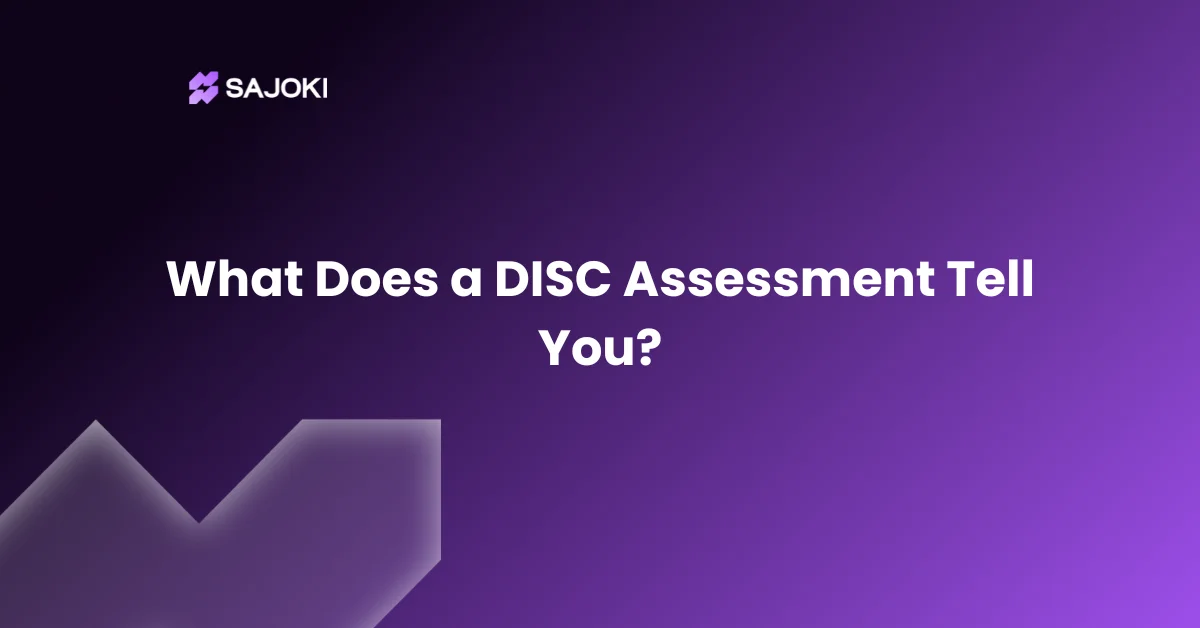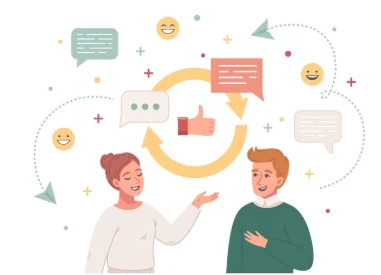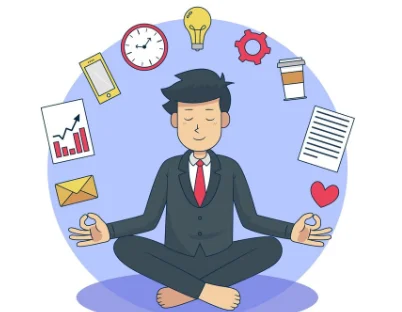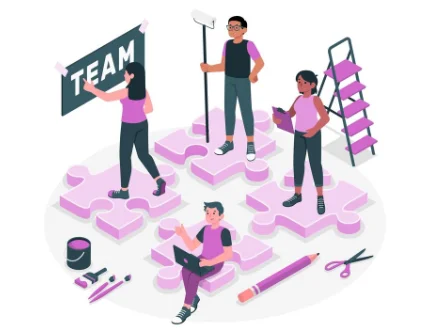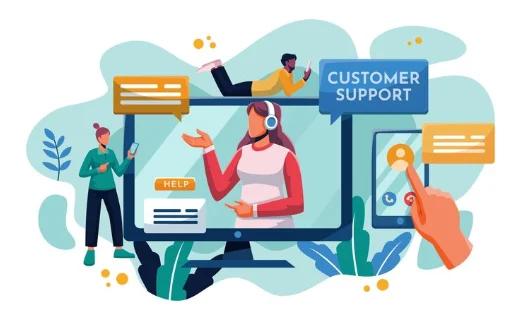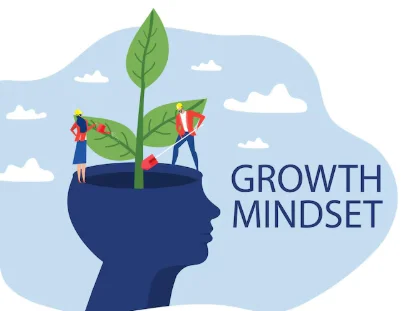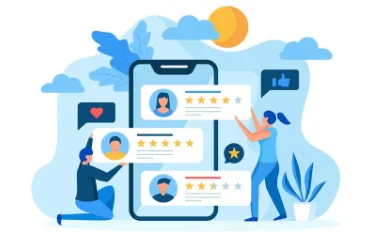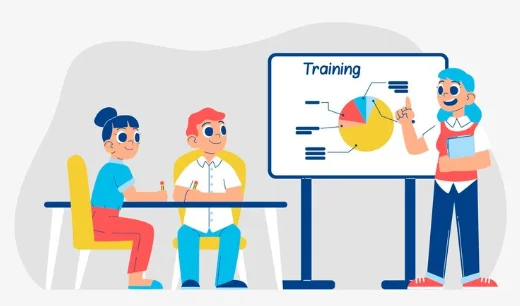Personality tests are used in offices, coaching modules, and even personal growth activities. The DISC test stands out from the rest because of how easy it is and its focus on observing behavior. Its creators term it a way of letting people know about themselves and how they behave in useful, positive ways.
So, what does a DISC assessment tell you? It identifies the behavioral modes of an individual in four main areas: Dominance, Influence, Steadiness, and Conscientiousness. Through examining the way a person responds to challenges, interacts with others, handles pace, and follows rules.
DISC gives insight that is used for communication, leadership, and teaming. If you would like to view some examples of how this tool has been utilized for recruitment, performance, or development, then continue reading. This blog shares all that the DISC test has to say.
Discovering the Four DISC Dimensions
DISC reduces behavior into four broad styles. Each describes a distinct way of reacting to the world and getting work done.
1. Dominance (D)
This is the trait that describes how individuals approach challenges and problems. Dominance high individuals are assertive, results-oriented, and competitive.
They perform best in fast-paced environments where leadership and decision-making are required. They desire control and may be demanding or blunt at times.
2. Influence (I)
Influence is the manner in which individuals approach people and affect. People who score high on Influence are emotional, enthusiastic, and sociable.
They are very strong in people skills and motivating others. They enjoy being popular and approved by people, yet they may struggle with detail.
3. Steadiness (S)
Steadiness is the way in which people manage pace and change. High-S individuals are even-tempered, patient, and committed.
They prefer routine and supportive environments. These individuals are team players but tend to be resistant to abrupt change or conflict.
4. Conscientiousness (C)
This scale informs us about how individuals handle rules and order. Individuals with high Conscientiousness are detail-conscious, analytical, and quality-minded.
They need precision and like to follow established standards. They are overly cautious and struggle with ambiguous situations.
What DISC Results Reveal About You
Now that the types are known, let’s explore further. The DISC test does not put persons in one box. It usually gives a primary and secondary trait.
These combinations reflect subtle personalities. It is possible to be high-D and high-I, dominant and outgoing. Another might be high-S and high-C, composed and structured.
1. Communication Style
DISC is applied to learn how you give and take information. High-I individuals may enjoy open talk. High-C people want detail and clarity.
Having this knowledge avoids miscommunication. It facilitates cooperation and feedback.
2. Response to Stress
Under stress, Dominant types take charge. Influencers will seek assistance. Steady types retreat, and Conscientious types over-organize.
That’s useful to understand in stress management. It helps leaders provide support that meets multiple behavioral styles.
3. Work Environment Preferences
Each DISC type performs best in a different environment. D types need independence, I types need teamwork, S types need security, and C types need order.
Acknowledging this enhances performance and engagement. Employees are more efficient working in optimal environments.
4. Decision-Making Styles
Quick decisions characterize High-D individuals. High-C individuals deliberate. High-I types trust emotions. High-S types require time to balance consistency.
Knowing this is valuable for leadership and team management. Decisions balanced by mixed-style teams are likely.
5. Motivational Triggers
What drives each person varies with DISC style. D requires control. I needs to be recognized. S requires security. C values quality.
Employers use it to boost morale. Managers can design rewards and feedback programs based on motivational styles.
Applications of DISC in Everyday Life
DISC observations reach further than personality theory. They are used for personal and organizational development. This is where the tool has most impact.
1. Hiring and Talent Selection
DISC is used in interviewing to identify how applicants might behave at work. High-I or high-D individuals could be suited for a sales role.
It reduces hiring mismatches. Organizations use DISC with interviews and CVs to predict culture fit as well as job compatibility.
2. Leadership Coaching
DISC is used by coaches to identify leadership styles. A high-D leader will need help with tone control. A high-C leader will need help to delegate.
Customized development plans maximize impact. DISC assessment provides a model to building leadership ability.
3. Team Building and Management
Well-balanced teams consist of a mix of DISC styles. This improves creativeness, communication, and problem-solving.
Team leaders can assign each member to focus on areas that leverage their strength. DISC reduces friction based on differences understanding.
4. Conflict Resolution
Conflicts are often caused by behavior or communication misunderstandings. DISC identifies the triggers and reactions.
Knowledge about how others act when stressed reduces anxiety. It helps groups find respectful and efficient solutions.
5. Customer Service and Sales
Pitches can be tailored by sales reps who are DISC savvy. High-C customers want facts. High-I clients enjoy friendliness.
This leads to better closing and satisfaction with customers. Customer experience is optimized with tailored approaches.
6. Personal Growth and Awareness
DISC is also for personal insight. Individuals learn strengths and blind spots. This builds emotional intelligence.
Results are employed to change habits and goals. Self-awareness strengthens relationships and resilience.
7. Educational Settings
Teachers use DISC assessment to understand pupil behavior. A high-I, active child might need high-energy activity. A high-S, consistent child prefers routine.
Teachers adapt delivery for classroom harmony. It makes learning more personalized.
8. Career Guidance
DISC helps one choose careers that match behavioral preferences. High-D may prefer to be a manager. High-S may prefer to be a counselor.
Guidance counselors and coaches use DISC to provide personalized advice. This improves long-term career satisfaction.
9. Performance Reviews
Managers use DISC data to give proper feedback. A high-I would like public appreciation. A high-C prefers written reports.
This avoids demotivation. Reviews become more meaningful and practical.
10. Training and Onboarding
DISC results help tailor training. High-D types prefer hands-on. High-C needs manuals and regulations.
Personalized onboarding has employees performing from day one. It speeds up learning and productivity.
What Does a DISC Assessment Reveal About Others?
DISC goes hand in hand with personal awareness. Besides personal awareness, DISC strengthens relationships. It teaches us how to make behavior fit the other person’s style.
It is possible to recognize others’ DISC style through observing cues like tone, pace, or body language. This facilitates effective communication.
DISC fosters tolerance and cooperation. It turns conflict into cooperation. It induces empathy through the display of diverse thinking.
It makes it effective in multicultural and multi-role environments. The better you understand people, the easier it is to lead, collaborate, and serve.
Platforms That Use DISC for Development
The majority of platforms integrate DISC into coaching, recruitment, or training. An example is SAJOKI. It uses DISC insights to maximize job matching and team design.
SAJOKI integrates personality data with artificial intelligence. It personalizes feedback for employment decisions, learning, and leadership development.
There are other software like Truity and DISCProfile.com. These websites offer personalized reports and practical applications in real life.
You should choose a reliable website that assures the test provides practical and valid information.
Frequently Asked Questions
Is DISC better than MBTI or Big Five?
All tests have different purposes. DISC examines behavior, while MBTI and Big Five examine deeper traits.
Do DISC results ever vary?
Moderately, yes. Changes in life have a tendency to affect behavior, but underlying tendencies remain stable.
How long does it take to give a DISC test?
Most DISC tests are 10 to 20 minutes long.
Can DISC be used for promotions?
Yes. DISC assesses leadership potential and work compatibility.
Are DISC tests accurate?
When given with validated instruments, DISC is accurate and useful.
Conclusion
So, what does a DISC test tell you? It gives you straight-forward facts about the way you behave, communicate, and respond to different situations. It identifies your dominant style and highlights strengths, stressors, and team roles.
Whether you are a manager, student, or job hunter, DISC helps you know yourself and others. Using tools like SAJOKI, this information is converted into actionable strategies that not just enhance individual growth but team performance as well.
